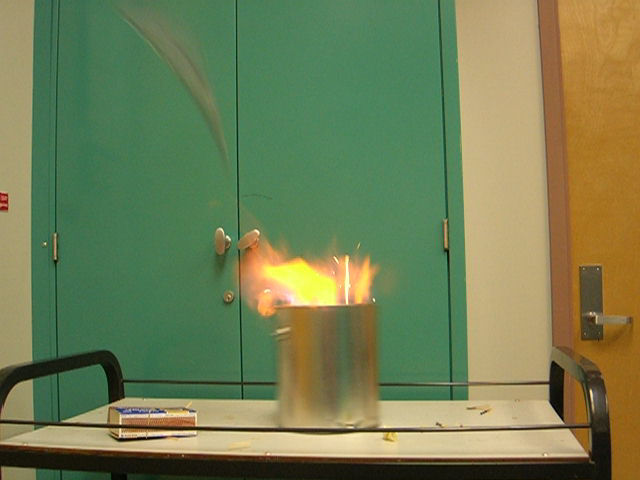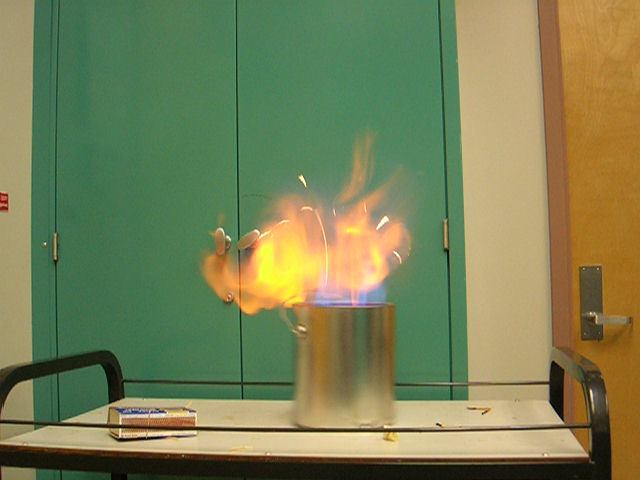Exploding Can: A Stoichiometric Ratio
SED 695B; Fall 2005

Can You See the Flame?


There Goes the Lid! KaBoom!
The Explosion in Slow Motion
Exploding Can: A Stoichiometric Ratio |
||
| Author(s): Tom Schuster | Discrepant Event
- Teacher's Guide SED 695B; Fall 2005 |
|
  There Goes the Lid! KaBoom! |
The Explosion in Slow Motion |
|
| Principles illustrated
|
What's Happening!?!?!?! |
|
Procedure:
Explanation: The gas burns at the top of the can where the gas can react with the oxygen in the atmosphere. As the gas escapes and burns, it is replaced with the atmospheric gases (including oxygen) through the hole located at the bottom of the can. Once the oxygen entering the can reaches the correct stoichiometric ratio, the reaction goes to completion very quickly. Only then can the explosion occur.
This is a standard combustion reaction; it produces carbon dioxide and water. It is also highly exothermic (exergonic) as it produces a large amount of heat. In our homes, it is important that we carefully regulate gas flow and that oxygen is not permitted in gas lines. |
||
|
Standards Grade 8
Chemistry
|
||
Questioning Script Prior knowledge & experience: Gas can be dangerous. Applying a flame to a gas source often results in fire and sometimes an explosion. Students are familiar with the move Backdraft and are intrigued by explosions. Students might be familiar with propane torches, gas barbeques, and gas appliances. Root question: Why is there a several minute delay before the reaction happens? Target response: The ratio of the gases must be 1:2 (methane: oxygen) in order for the explosive reaction to occur. Common Misconceptions: Gas explosions are relatively uncommon, yet our homes have many gas appliances and often pilot lights. Why is natural gas a safe way to cook, heat our homes, and dry our clothes? Relationship to Everyday Life: This reaction is exactly what happens in a car's pistons. When properly timed and mixed, the fireing of the correct ratio of fuel and oxygen produces the greatest explosive reaction. If carburation is done correctly, cars run most efficiently.
|
||
References & Links: Methane Explosion Warmed the Prehistoric Earth, Possible Again Methane Explosions and volcanoes Fatalities Occurring at Underground Coal Mine Disasters Since 1980 |
||